Tikal in Guatemala
Border Crossing
Gine had from the Internet
instructions and it was actually not that complicated – with help from one of
the local boys Fernando, all went well and this it how it works.
- We park the car and go into the
- Immigration Belize: First Counter: we get our passport reviewed and pay our Belize Exit Fee: 40 BD per personnel then we go to the next counter and here we get our passports stamped
- Next Money Exchange – there won’t be a bank between here and Tikal and you have to pay all in cash in GTQ’s: so we change 1050 GTQ (sounds like we are rich)
- Back into the car and through the Fumigation: like a giant Car wash so that we don’t bring Bacteria inside the country
- Paying the fee in the “puesto site melchor de mones” - “Permancenca solo personal autorizado” (18 GTQ) for that fun part (by the way now our car is not as nice and clean anymore)
- we needed to park the car in the appropriate spot for inspection
- Inside the building first we need our Guatamala stamps: where you go: Tikal?
- Now the car rental: we have all the papers from Crystal – oh our copies of the passports need the Guatemala passport stamp too – some Spanish talking back and forth between Fernando and the guy: and he gets the stamp for us
- Let’s go outside and inspect the car: licence plate, VIN number – all matched, Fernando helped the guy read and do it
- Let’s pay Vehicle Permit fee: we go for the closer option right near the immigration service instead of walking all the way to the bank: 190 GTQ
- Back to the counter we get back and our permit gets paid and we get also a little piece of paper in case we come to a checkpoint
We are ready to go: Welcome to
Guatemala! And Thanks Fernando.
Gine read when you drive over
the big bridge which is right in front of you into Guatemala the military
guards with the machine guns may stop you and ask for the permit as well as for
20-50 GTQ – ok so that is not official, but then would you say you don’t pay to
a guy with machine gun? Thanks to the internet we know the backup plan: you
turn left before the bridge and there is the super old bridge with shops and if
you drive along there you come to the Highway and you bypass the checkpoint –
that’s what the locals do and that is what we do.
Driving on Guatemalan’s road
with quite beautiful roads – the
feel here is different, the houses are older and the churches more beautiful –
also we drive through a lot of open country site and see quite far. One of the
things which really jumps out: as where in Belize you see a lot of SUV’s – here
you don’t, but you see a lot of motorcycles: and I don’t think there is a law
for helmets – because the only helmet we saw was the guy from Canada –
otherwise the whole family sits on the motorcycle.
We enter Tikal National Park
and then comes the entrance to
the Tikal NP, it is quite funny, we are still 17 km away from the actual
entrance to the ruins, the tickets you have to by here, so you seriously have
to think about what you want to do, because if you change your mind – you have
to drive all the 17 km back here. And you can only pay in cash: that’s why Gine
did big math and decided on how much money we will change: 500 GTQ entrance fee
(sounds like a lot!!) that is 150 pP entrance for tomorrow, and 100 pP for
going in the same day for the sunrise. By the way you need to give them your
passport and we got each 2 tickets: one for the park and one for the
morning. Then back into the car and up
to the gate: here we get another piece of paper for our car: they write down
the time we leave the gate – and then once we enter the hotel complex: they
wrote down the time again: here they keep track that you don’t take too long (I
wonder if they also check that you don’t drive to fast – because speed limit is
50 km because of wildlife)!!! and same will be on the way back.
the Jungle Lodge
now we are in the hotel complex
area: where is it? And what we thought is already the entrance to the park, you
actually turn there to the lodge. They were super friendly and we were guided
to our room – which is super nice and when we checked out the bathrooms, we
were astonished, brand new and super clean – by the way, I think we always were
the only ones there. All the rooms have a long balcony and each room had 2
chairs, super awesome – except that we didn’t even had the time to enjoy. A quick check at the Visitor center (we didn’t
visited the museum, guess what here you pay for all) and the souvenir shops and
then we were heading for the pool. Did I mention that there are clouds today!!!
Time to get our diary up to date.
Early to bed and early to
rise
Gine read, that the sunset and
especially the sunrise are super amazing and you have to do one, if you are in
Tikal. So when we drove in there were clouds –Gine said we do the sunrise. That
means meeting at 4 am, ok we need to get up at least at 3.40 (because we have
to empty our room before we go, checkout is 11 am). You want 7 hours sleep, you
are better in bed by 8.30. That means supper and then it is nearly bedtime...
wow we miss a whole evening!!! and there are so many cool spots to sit or hang
out.
A walk in the dark
at 3.30 a bang at the door: time
to get up. Up we go, and all is packed and put into the car, Gine brings the
backpack with all the drinks for the day like 5 bottles of water (could be a
hot day), rain jackets, the breakfast boxes... Time for a quick coffee and it’s
time to go. We need our tickets and all gets proper checked and then we walk
into the park. Ok afterwards I can say: the walk to the Gran Plaza is 1 km, and
it is at least if not more to temple IV. It’s pitch dark and you hear birds,
the leaves and some howler monkeys... we visit a stela – by the way the carving
looks even more eery with the flashlights– we saw glimpses of ruin hills and
tropical plants. Finally, after a good hour we arrive at Temple IV and up we
go:
Sunrise on top of the temple
we found a spot at the very top
and soon discovered we need our rain jackets, because it is quite cold up here.
There is fog and mist all over the place (on top of the ruins) – as it gets
brighter we can see a glimpse of the pyramids coming through the forest and as
it gets bright – you can’t see them at all anymore. What is our verdict: It’s a
complete waste of money and also getting up this early... We decided you
definitely only do this once. (Even if the weather would be great – guess what
it is a super pricy sunrise over a forest!!)
with a tour guide
and then the rest of the tour
starts – a bit of talking, following the guide and he went in Gine’s opinion
sometimes way to fast and it is not Gine’s style at all. Even he is very nice
and we are only a group of 5 people. We walk and then up a temple (even he
didn’t even told us which temple it is: Gine found later it is the Sloping
Panel Temple) – then to the next one (The Great Pyramide): part of the E-group
and up we go: and now we can see glimpses of the other temples coming out. And
on we go to the Temple II and up: and now we are at the famous Gran Plaza:
looks amazing – that is when Gine said to Paul: that’s it - no more tour guide
– I want to know what I see and I want to explore by my own and so we said
Thanks and good bye. (Really we have a tour guide and don’t even know what
temple we look at!!):
- He told us that with the modern computer technology, they will one day be able to decipher of the hieroglyphs (but in Gine’s opinion that is like there explanation of how the earth and the universe came be, all speculations but not real facts, because who says we interpret it correctly): there will be likely always some mystery involved
- as well that during some of the restorations and excavations they were clear cutting the trees on the mounds for access (but sometimes the roots were holding the temple together), they dug in tunnels to see what’s inside, as per him, some parts of the big ruins collapsed because of this and sometimes it is better to leave as it is
- he mentioned that nearly everything was in a 20 year cycle, because the average life expectancy was 30 – 40 years, part of the short life was the unhealthy conditions of the workers (they assume that is how they kept them in their place): working in lime stone quarries where there are toxic smells, working with mercury or sulphur, the cinnebon red color they used also was extremely toxic. So the rulers and elite were the only ones living longer
- and another interesting aspect (I don’t know if it is really true): Tikal has 7 temples: and when you look at there locations you will find that it looks like the big dipper in the sky (only mirrored): so Did the Mayans know about the Big Dipper and then built the temples accordingly? Or is this some wishful thinking and we make them smarter? The Temples were built over hundreds of years and are memorial monuments, so did each one think about the stars?
- Corn: he said that corn does not grow in the wild – corn needs man to plant, protect and grow, as well man cultivated it and it is a human invention. Scientist think that humans developed it around 7000 years ago in Central America and started from wild grass. Also called Maize the people of Central and South America depended on it for their food. Columbus was the one bringing the corn to Europe
- Did the Mayan’s know about the wheel? I mean in the ball court markers are round and hollow? We read once that they didn’t had animals to pull them, our guide says that they knew about the wheel but the elite did decide to not use, so that the workers had to work harder. (Actually, some figurines had wheels)
the 20-year cycle and the
unique Mayan Calendar:
- The Mayans actually had 2 calendars: a religious and a solar one: and every 52 years they would start at the same say: this was a time of celebration (here in Tikal they built the Twin Temples for Katun). At this new Fire Festival (el Fuego Neuvo) all fires were put out and utensils thrown away; it was a time of renewal and a new beginning: the Calendar round
- Haab = the solar calendar: has 18 month each with 20 days and then 5 extra unlucky days: making 365 days. The Mayans knew that the solar year was not exact and that is why they added the extra 5 days the Wayeb (if you were burn during that time you were either extremly unlucky or lucky – who knows) – Which Brought a big question for Gine: so they knew about solstices and equinoxes, observed the moon: why did they not have 28 day month?? does not make sense.
- Tzalk’in: is the religious calendar and was a 260-day calendar with 2 cycles: a 20 day cycle and a 13 day cycle.: each day has a name and number – the name comes from the 20 day cycle and the number from the 13 day cycle
- the long count: is the “3rd” calendar and has historical purpose: the long count started on Aug 11, 3114 BC when the Mayan’s believed the world was created (I wonder how they came up with this one, when the Mayan history only started around 1599??). And they also had an end-date when they believe the world will end: Dec 21,2012 – but it did not end
- each Maya month had a glyph that represented the month
breakfast at the Gran Plaza
First thing we sit down the
steps at the plaza near the stelae and set up breakfast: I mean when do you
have breakfast in front of the tallest pyramids? I guess that was one of the
best picnic spots we ever had - It was totally fun. Then Paul laid down when
Gine told him all about the history of Tikal and how they found it again –
honestly, I’m not sure if Paul was even listening: so here is what we know:
The most impressive Maya
city we know:
- Tikal NP is the first mixed UNESCO heritage site: a cultural and natural wonder and encompasses 575 sqkm with thousands of structures
- Tikal is the most popular tourist destination and most likely the most significant of all Mayan sites
- the largest Maya city in Guatemala is El Mirador: which is too much of the grid for us: you need to plan a 5-day trip with 60 km one way into the deep jungle to see it, also it’s heyday’s were in the pre-classic. Yaxha (we run out of time and had seen enough ruins by then) – is close to Tikal and the 3rd largest Mayan city
- Stela 29 is the oldest in Tikal from July 4, 292 AD and Stela 11 was the last carved one from 869 AD
- when you walk around the site, you often walk on one of the original old limestone built sacbe’s
- Tikal means “the city of voices” or “place where the gods speak” - the ancient name is Yax Mutal meaning “the great Green Bundle”
- they likely settled here because of flint – which is used to make clubs, knives, arrowheads: that meant they had good tools (by the way there is no water source close by, they had to collect rain water
- Chack Tok Ich’aak – King Great Jaguar Paw ruled in the mid 4th century. He started a new warfare – a warrior Siyak from Mexiko brought the atlatis: a weapon sling which is capable of firing arrow. The king sent then auxiliary units encircling the enemy throwing spears to kill from a distance: this it the first use of “air power” among the Mayans – it helped Tikal to conquer Uazactan and making it the dominant kingdom for close to 500 years and it became the most magnificent city
- Some think that Siyak killed the Jaguar king – because the Crocodile king was from Mexico and married into the Tikal dynasty
- the eternal rival was the great city-state of Calakmul – they made an alliance with Caracol (yes we were there too) and together they defeated Tikal in 562: the star war was started by the King of Caracol the lord Water. It is called a star war, because the battle was timed around an astronomical event like solstice. And for 120 years Tikal was in decline – but it was never broken
- in 682 Ah Cacao initiated a new dynasty at Tikal and defeated Calakmul finally in 695 AD when Tikal became the ultimate power in the Mayan world
- Much of what we see today around the Gran Plaza is from him and his heir the Divine Sunset Lord. Ah Cacao is buried beneath Temple I
- During Tikal’s heydays the city covered 30 sqkm with around 100.000 people, but Tikal influenced over 500.000
- it was mostly abandoned by the end of the 10th century: likely due to climate change, a sever drought, overpopulation, war and a revolt against the ruling dynasty: the people fled the area
the Classic Period of the
Maya?
- Is from 200 – 900 AD
- Before that the Pre-Classic dates from 2000 BC to 200 AD: that is when the Mayan’s appeared and the Olmec’s disappeared: during this time they started with the writing and some cities, they started the calendar and the monarchy: Cities who started to emerge during that time were El Mirador, Cahal Pech, Lamanai, Uaxactun,
- After it came the post Classic Period from 900-until the Spanish arrived: the Mayan cities in the Central America got abandoned, but the Mayan’s still built cities in the Yucatan: like Chichen Itza who was powerful from 925-1250, Tulum, Uxmal and Mayapan still existed when the Spanish arrived
- During the Classic Period most of the great advancement happened: it was the golden age for the city states – most of the cities got abandoned around 900 AD which ends the Classic Period
Rediscovering Tikal:
I think the ruins and the Mayan
culture is super fascinating, but what is also super interesting and
fascinating is, how it was that after hundreds of years we re-discover the
ruins, how did they find them, who excavated and explored them...
- The Itza who occupied Tayzal (now Flores) likely knew about Tikal – they may even came and worshiped at the shrines
- in 1525 Hernan Cortes marched by Tikal, but he didn’t see the pyramids which were overgrown
- in 1695 a lost Spanish priest Father Avendano wrote about a great hidden city in El Peten
- it wasn’t until 1848 that the Guatemalan government sent an expedition to visit the site: likely after the bestseller of John Stephens got published in 1841, where he talked about the fabulous Maya ruins (by the way Stephens never visited Tikal)
- in 1877 the Swiss Gustav Vernoulli visited Tikal – he removed the carved wooden lintels from the Temple I and IV and shipped them to Basel
- Maudesly took the first picture in 1881 and Maler visited the site in 1911
- Excavations, explorations and restoring were carried out 1956 -1984 by the university of Pennsylvania under William Robertson Coe II: in 1958 they discovered the tomb of Ah Cacao
- in 1979 it became UNESCO world heritage site
- in 1996 they found Stela 40 from 468 AD while mowing the grass on the central plaza
- LIDAR = light Imaging Detection And Ranging: it is also called 3D laser scanning and a surveying method: differences in laser return time and wavelength allows it to make 3D digital images, it can reveal micro-topography which otherwise is hidden by vegetation. It detects buried features. With LIDAR they discovered that not as originally estimated 6000 structures but they exceed at least 10.000
- today still 80% is not excavated – and some of them are better not excavated, since tree roots are going in so deep, that they could fall apart
The jungles here are still
full of mystery – and we are only just beginning to figure it out.
Theoberto Maler
(1842-1917)
- If you are here – you will hear that name, he found Yaxha in 1904 and did a lot of excavating in Tikal living in one of the ruins (yes they call it today the Maler Complex)
- he devoted his energies to document ruins of the Mayan civilisation
- he was born in Rome to German parents and studied architecture and engineering in Karlsruhe
- he was eager to see more of the world and went to Mexico as a soldier with Emperor Maximillian
- he then decided to stay in Mexico obtained Mexican citizenship and changed his first name to Teoberto
- after his parents died, he settled in Yucatan, learned Mayan and started to document new ruins all the way into Guatemala
Alfred Maudslay (1850 –
1931):
- a British Archaeologist and one of the first Europeans to study the Mayan ruins
- born in England, after graduating Medical School he lived and worked in Trinidad (Caribbean), Cairns (Australia), Fiji Islands, Tonga, Samoa and after 6 years he went to Calcutta to visit his family and then set out to Guatemala and British Honduras (talk about someone travelling a hundred years ago!!)
- he did a lot of archaeological work and also worked with Maler in Chichen Itza
- he started to make plaster casts of carvings, he also took many detailed photographs (dry photography was then a new technique) and made copies of inscriptions
- he was involved in 6 expeditions and in 1902 wrote a 5-volume book about the Mayan ruins
- when he got the permission to do a survey of Mount Alban in 1902, he didn’t have enough money to finance it. His company has gone bankrupt
- he died in 1931 in England
How do we know so much
about the Mayans?
- The Mayans spoke different languages in different parts of Central America, they were related, but often couldn’t understand each other. The Spanish reported over 20 different languages when they came in the 1950s
- they did had once a very advanced writing with their hieroglyphs (looking similar to the Egyptian ones): they used symbols = glyphs to represent words, sounds or objects and logos which were used for a whole word, by putting several together they wrote sentences and told stories: they had over 1000 glyphs & logos.
- They recorded their histories, astronomical events and prophesies in glyphic form of writing and on stone monuments (Stela): those codices (scripts) are getting deciphered in the last few decades and give us an understanding of their history (but do we do a proper job in deciphering?)
- a codice was a folding book made of paper-like material from tree bark. The Spanish thought that the Maya Codices were evil and burned them only 4 survived. But none of the codices record history: they are about rituals, calendar and astronomy
- Madrid Codice: 112 pages, taken to Spain and in 1869 it got studied and published, in 1872 a collector in Madrid bought another one – it was then they discovered that they were one codex, in 1999 they examined the age and decided it was from the 17th century.
- Crolier Codice: discover in 1971 in a cave near chiapas/Mexico and in 2016 they determined that it was authentic and written around 1230 making it the oldest surviving book in the Americas.
- Dresden Codex: likely from 1200 – 1250 artistically it is the most superior, in 1739 it was purchased in Vienna and brought to Dresden, it got severely damaged during the bombing of Dresden: it has 39 leaves and is 3.5 m long.
- Paris Codex: very poorly preserved and it largely relates to the 20-year cycle katuna: it’s proabaly from Mayapan and got tentatively dated to 1450 AD
- After the Spanish arrived, they used the roman alphabet and wrote documents in Mayan language and kept them secret from the Spanish
- they were also one of the 3 ancient cultures to independently discover the concept of “0” and use it in their calculations (By the way the Greeks and Romans didn’t know about the 0). The Mayans used numbers with the base number of 20 using a system of bars and dots
Paul’s belly is not into more
walking
we then went up the North
Acropolis: here they took off different layers at different spots: as we
already know the Mayans always built on top – on here we saw the outer layer –
then part of the next layer – and the next and at one spot they exposed a huge
mask (I think it was at least 3 layers in) – it was kind of cool: even it did
not look like a finished building (more info below). After we came down Paul
said, my belly said it’s bathroom time again. And that was at least #5 for
today.... something is not working as it should. Gine said: Paul maybe you
should go back to the pool and rest... Paul said Perfect. Paul went back and
Gine ventured off by herself:
Gine explores some more ruins
- And here is what we all saw:
Gran Plaza: once you are
there it nearly blows your mind – because you are standing between those 2 huge
high amazing temples (or should we call the burial sites) – then the plaza is
scattered with altars and stelae and the 2 big buildings on each site – I can’t
even imagine how it was in the old days:
- With the start of building the Gran Plaza, they started the classic period: underneath todays grassy plaza are 4 layers of paving – the oldest from 150 BC, the most recent from 700 AD
- It is flanked with Temple I = the Great Jaguar Temple and Temple II: the Temple of Mask (which we went up)
- here are also rows of stelae: once there were 43 of them talking about the deeds of the kings with 39 round altars: we saw some few with some carvings on it, but most of them you couldn’t see anything at all
Temple II – Temple of the
Masks: ok so this is the bit smaller temple, but it is the one we went up
too and had this super amazing view: it is amazing to be here and look down.
And if you look up and you can
- With 38 m at the moment, they say at one time it was as high as Temple I
- it got built in honor to the Jaguar kings wife Lady Kalajuun Une’Mo
- they called it now the Temple of masks, because there were two masks heavily eroded (I couldn’t make them out) flanking the main staircase – we could see some masks over the 3-chambered temple at top
Temple I - Jaguar temple:
you walk around and you look up, what is the most amazing about it, is how
steep it is and how small the base is, seeing other Mayan sites before,
normally high temples are super wide – this one is narrow and steep. I could
look at it forever: and clearly this is the most impressive temple in Tikal – I
don’t know which is the best view from the top of Temple II and you have the
great view, standing in front and feeling tiny or being up at the Maler complex
and look at it.
- This tallest pyramid 47 m high was built as a tomb by his son: for Hasaw Chan K’awil (the Lord Chocolate – Ah Cacao) who died in 721 AD. he was not only Tika’s greatest ruler they found his grave with a lot of jade objects, sting ray spines, pearls, bones carved with hieroglyphs)
- one on top of the 3-chambered temple was a wooden intel with carvings (which is today in Basel in the museum)
- Interestingly during Equinox Temple’s shadow kisses the base of Temple II and later in the day Temple II reciprocates this
- it got excavated from 1955-64
North Acropolis: in front
of it we had our breakfast and we checked it out together: a lot of steps going
up
- the oldest of the structures is from 600 BC – and as easily to see they rebuilt on top of it over and over again: the final version was from 800 AD with more than 12 temples: most of it was from the Chocolate king
- it’s difficult to image how it looked out in the end because they cleared so we are able to see the old structure: but this also revealed two huge wall masks we could see: from 425 AD it was on a mausoleum for a king
- Temple 5D-33: was a temple which also got kind of dismantled in 1965, at least once it was a temple (this is where you can see the masks)
Central Acropolis & the
Maler complex: now here you should have lots of time to walk up everywhere
explore everything, enjoy the different views from different angles, it is a
hugely complex area and actually I don’t know where one ends and the other one
starts. There are also a lot of spots to sit down (with less people, because
not everyone climbs up here) and enjoy. Oh, and from here you could see the
tiny ballcourt near Temple I (they call it the great Ball court – guess they
haven’t seen the ones we saw before)
- They say it was a residential area for the elite built with lots of court yards, 45 little rooms (some had beds), some small temples
- in here Maler lived when he worked at Tikal from 1895-1904 (guess he didn’t had to walk every day the 1 km to the plaza as we did – wouldn’t it be fun to stay here?), and that is why they call it the Maler’s palace
Temple III – Temple of the
Jaguar Priest: first Gine didn’t realize it had also one of those typical
Tikal temples on top, because it is not restored and you see one of those
typical huge mounds with plants and trees (and the sign) – when looking up you
can see the glimpses of the typical Tikal top temple.
- Here starts the Tozzer causeway leading to Temple IV (by the way all major sacboabs connecting the city were named after the early explorers)
- a lintel at the top shows an elaborate Jaguar suit to be believed the ruler Dark Sun, maybe he was buried here? He is considered the last of Tikal’s great rulers (we could see this from one of the other temples)
- it was the last pyramid constructed in Tikal in the 9th century with 55 m high and it is the 3rd tallest pyramid of Tikal
- in front is Stela 24 marking the date as 810 AD the end of a katun
Temple IV = temple of the
double headed serpeant: Gine went
back to Temple IV and back again to see how the view is during the day (which
confirmed it is not worth to come for sunrise!!!). They say when you are up
here you feel like being in a helicopter because of the panorama across the
jungle canopy – it is very nice (but I think In Xunantunich the view was even
better (except there you couldn’t see those super cool typical Tikal temples
sneaking out of the jungle).
- with 70 m it is the tallest stand-alone pyramid in Tikal and the 2nd tallest pre-columbian building in the western hemisphere (there is only one taller in El Mirador) – wow and we climbed all that up in the dark!!!
- it got dedicated in 741 by Yaxkin Caan Chal – the chocolate kings son (there was a wooden intel on top describing it – yes it is also in Basel museum): they believe it is his memorial monument
Complex N: as Gine walked
by she could see those stelae and checked it out: on it you can see a king and
on the altar you can see a priest figure in the process of exhuming the
skeleton of a female ruler. Here are also twin temples from 711to mark the 14th
katun or 20-year cycle. (If you have enough time you can check out all 7 sets
of twin temples)
Temple V: I think that is one we
missed, this one is 57m tall
Temple VI: was too far out of
the way, it got discovered in 1951 – they think that there are at least another
30% that are not excavated
Plaza de los Siete templose:
this plaza of the 7 temples is a huge area with a lot of buildings around it –
the name says 7 temples and some palaces, another cool spot. I thought it was
king of a creepy place with those ruined temples
The Great Pyramide of El
Mundo Peredido = the lost world: ok so here we were earlier before, but at
that time we didn’t really now where we are at – except that we went up on two
temples:
- the Great Pyramide in the middle has the cool fantasy name “Temple of the lost world”
- they dug tunnels into the pyramid and discovered 4 similar pyramids between the current and the oldest one underneath which is likely form 700 BC (and would be the oldest building in Tikal
- this pyramide has 3 eroded staircases which are flanked by huge masks (and yes on one side we could see it)
- By the way: this is one of the Typical E-group: when standing on top you will face 3 smaller pyramids and you can see the sun raise over the two outer ones on the solstices Dec & Jun 21 , as where the sun will raise over the middle temple on the equinoxes Mar & Sep 21. This system of the E-complex got discovered in the nearby Mayan ruins of Uaxactun (no we didn’t go there, we saw a lot of ruins and were running out of time) – oh even on top today you can’t see the E-group
- they also say that the Mayan’s watched the movement of the moon, sun and venus – at least the pictures indicate so
- Quick site note to uaxactun: the found it in 1916 and it means “born in heaven”, it was one of the first sites which got explored, studied and excavated. They think the E-group they found here helped the Mayans to determan seasonal, agricultural and ritual events. It developed at the same time as Tikal and they were in constant competition
Sloping Panel Temple:
this one was the first one we climbed up on – also known as Templo Tablero
- Also known as Templo Talud-Tablero is the 2nd largest structure in the lost world
- It’s the only temple in Tikal with this style – they think it is because they were trading with Teotihuacan (like a today’s embassy when one culture has a building in another country)
- It’s 33 m high and has 3 rooms on top – they started to built the first one (only 7 m high around 300 AD, this last one is from around 700 AD)
Bat Palace – Palacio de los
Murcielacos: a big mound and on top is this square building with some
windows – and because it has windows it is also called the palace of windows –
you wonder who lived here
Back at the Gran Plaza (which is
a magical place) Gine has to go one last time up on Temple II: only at this
time of the day – there are a lot of tour-groups and people here, not like when
we were earlier and we were the only once. Still it is an amazing place and it
makes us wish, that we could have a quick glance into the past on how life was then.
Time to head back – and on the way out a quick stop at:
Group G – Palace de las
Acanaladuras: this is a very unique palace, totally different then all the
other structures, but it was super cool to see – so many different styles and
places here
- you come here via the Mendez causeway
- They say it was a residential building – some think it was the palace of King Yik’in Chan K’awill (the son of the chocolate king) – and if you have enough time maybe you can check out all 29 rooms
- With vertical groves in the walls surrounding the court yard – this is what it gave it its name: Palace of the vertical columns
And no you can’t see all – that
is what Paul always says: and since we started walking at 4 am and it is now
noon, it is time to say – that’s a lot we already saw. We are glad we came
here.
blue sky and a blue pool
Back at the hotel, Paul had 2
loungers in the sun at the pool – that means into the swim suits and into the
water: wow is that ever cool and refreshing, some relaxing in the sun, back
into the pool and sitting on the flooded area – getting a bit a massage and
another swim and more relaxing... then it’s time to go we have more plans for
today.
Did I mention that they time you
on how long it takes you to drive from the Tourist area to the Park entrance:
I’m wondering if they want to make sure you don’t drive to fast it’s a speed
limit of 45 km/h because of the animals (even we haven’t seen any)

 Tikal, Petén Department, Guatemala
Tikal, Petén Department, Guatemala
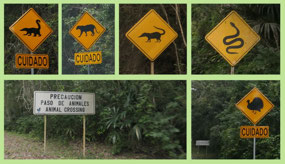
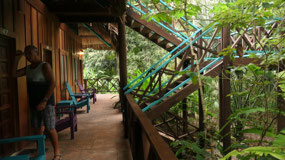
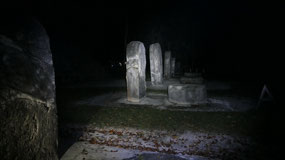
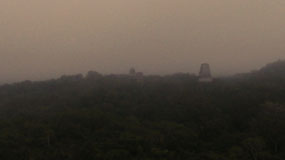
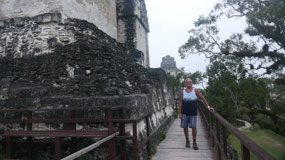
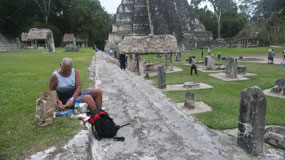
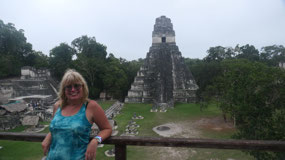
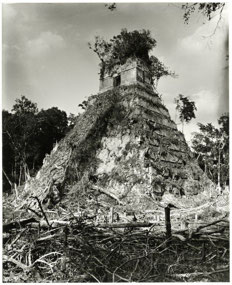
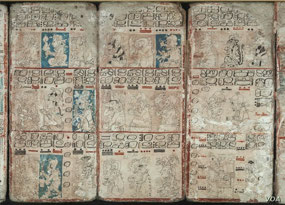
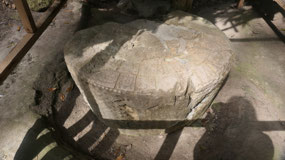
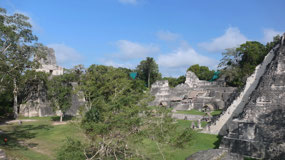
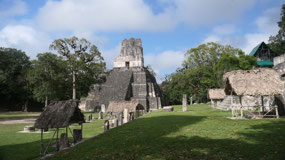
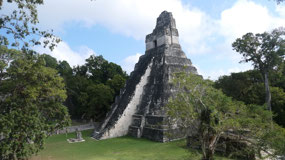
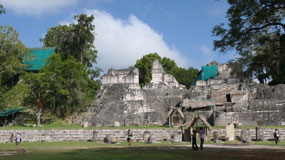
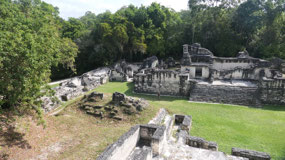
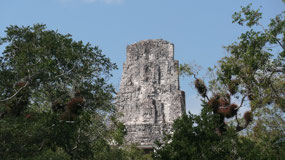
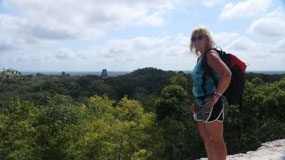
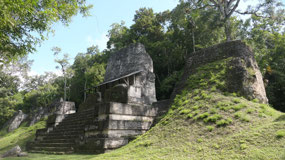

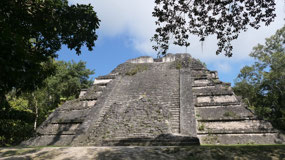
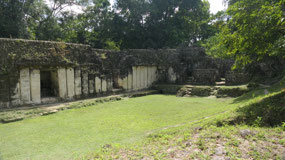



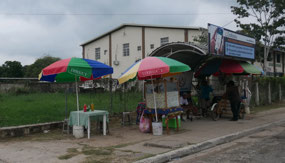
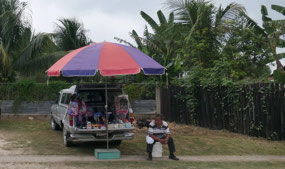
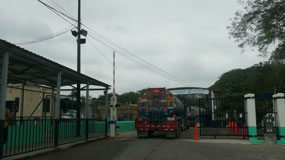
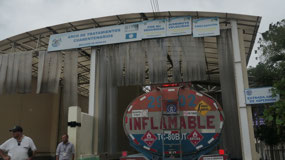
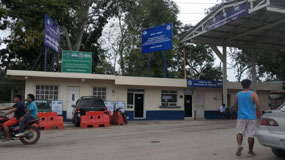

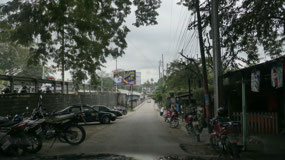
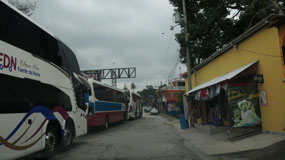


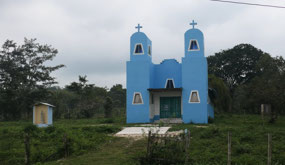
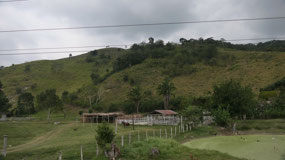
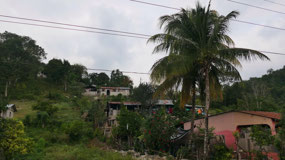
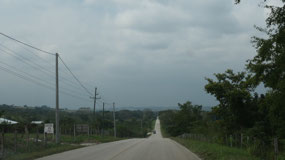
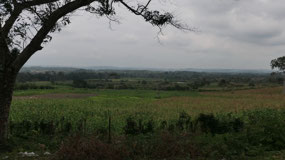


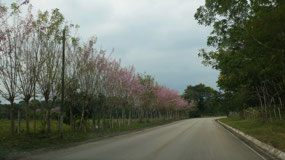
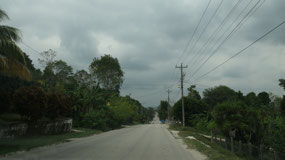
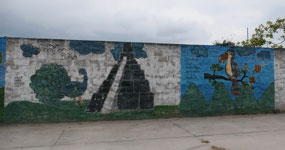
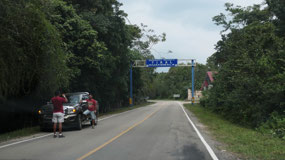

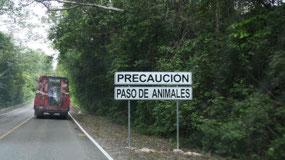
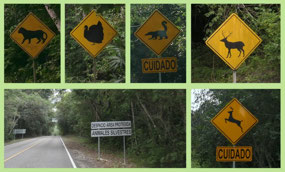
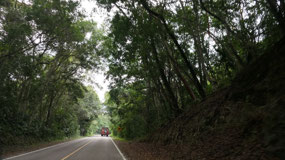

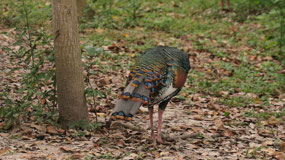
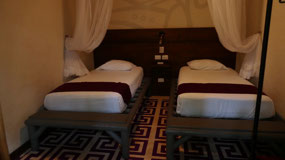
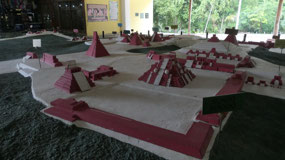
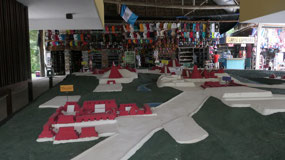
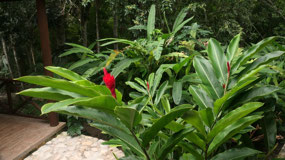
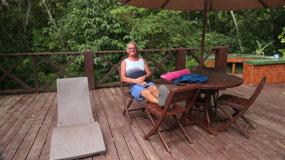
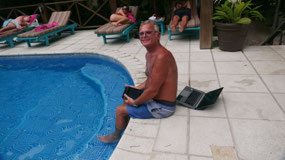
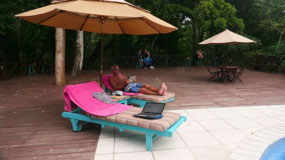
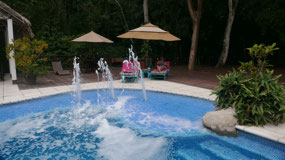
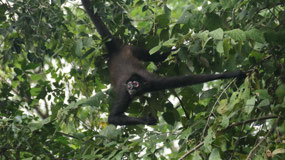
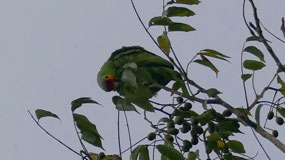
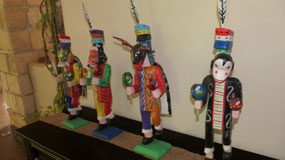
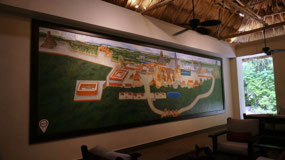
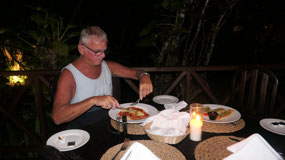
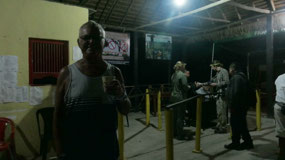
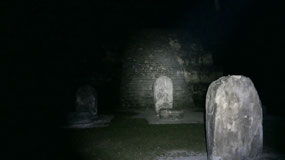
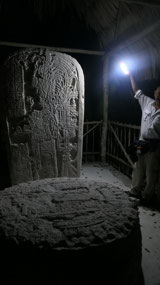
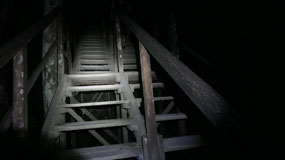
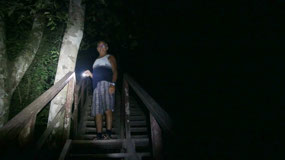

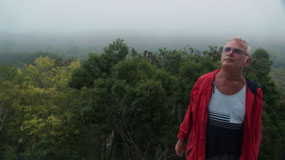
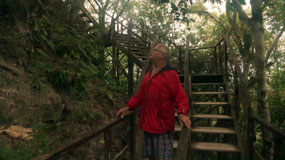
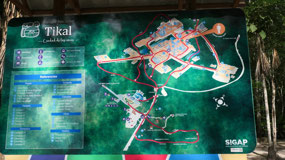
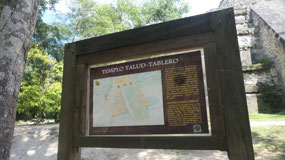

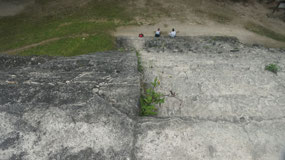
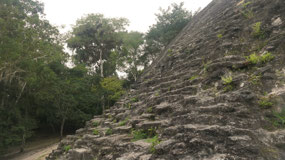
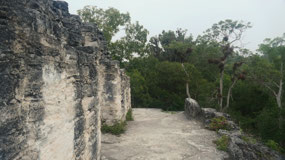
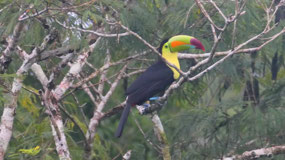
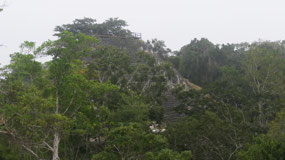
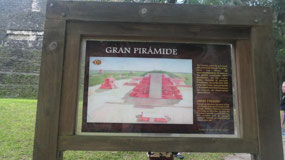
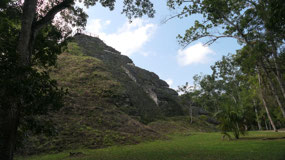
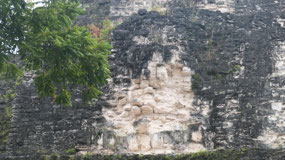
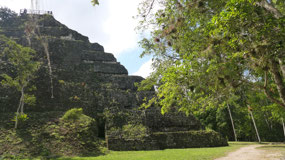
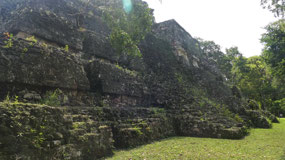
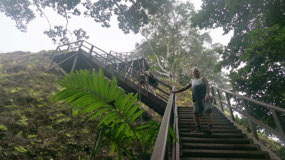
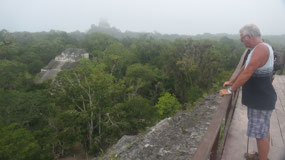
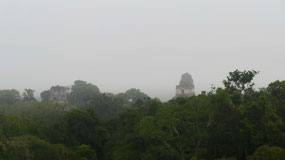
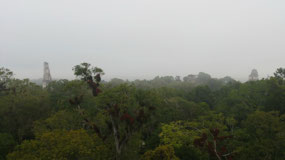
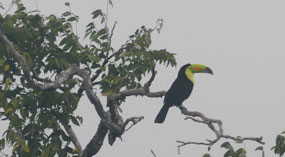
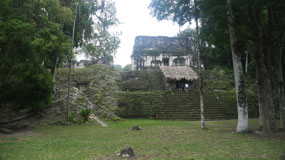

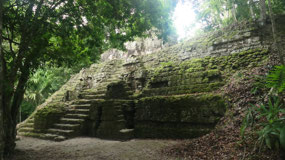

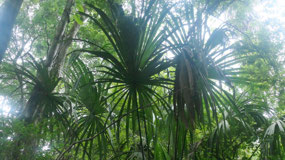
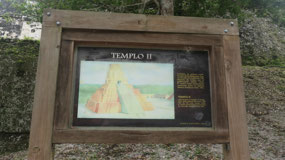
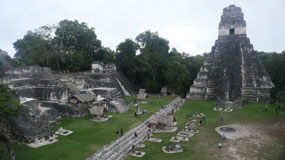
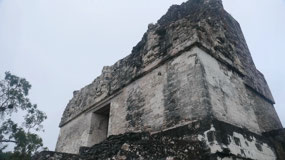
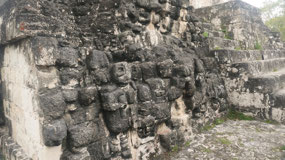
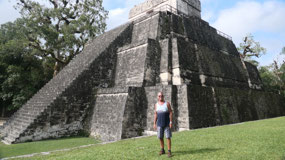
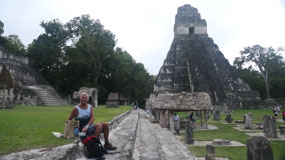
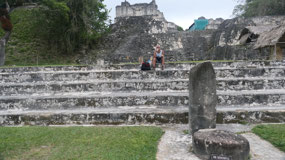
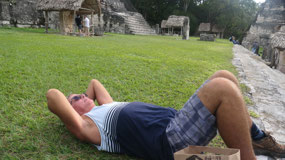
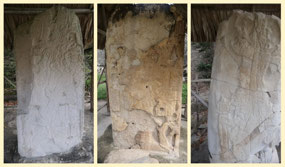
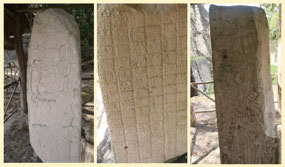
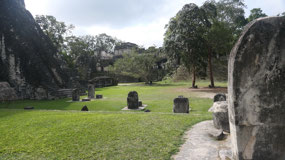
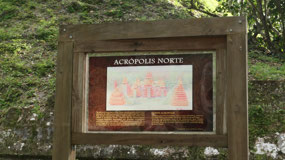
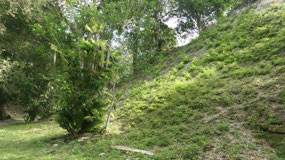
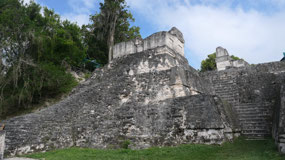
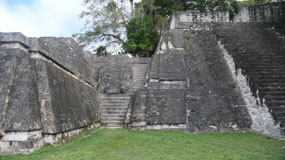
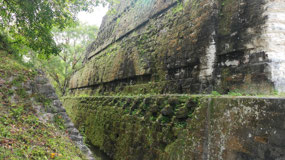
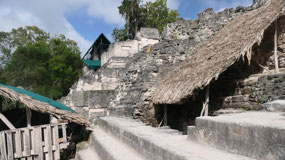
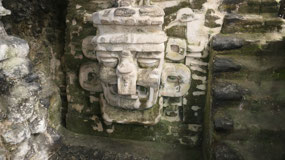
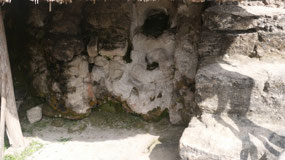
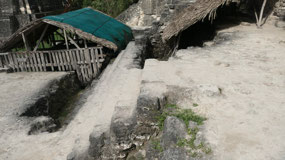
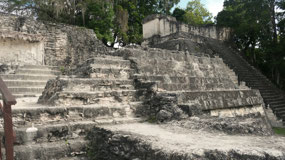

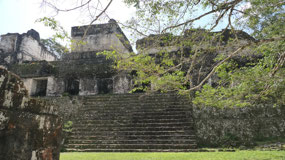
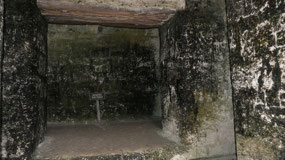
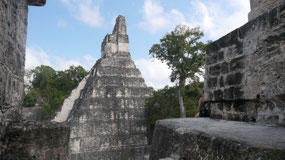
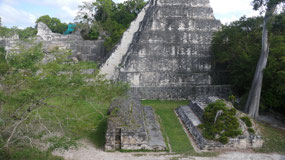
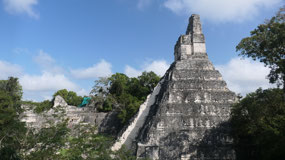
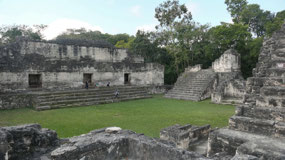
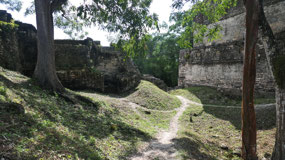
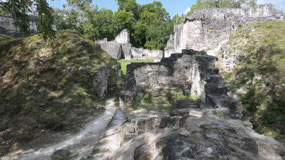
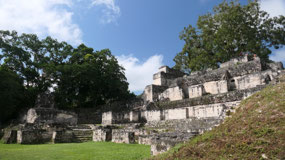
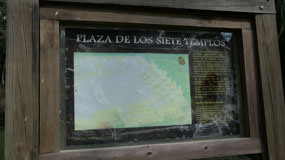
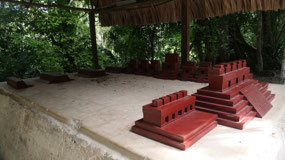
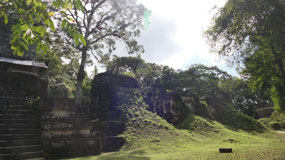
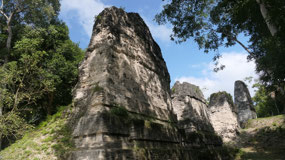

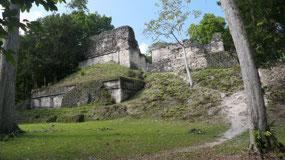
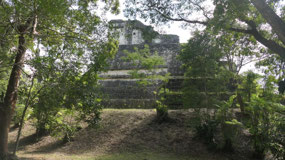
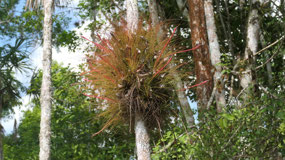
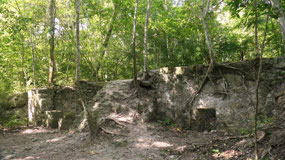
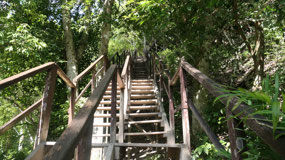
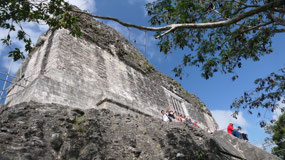
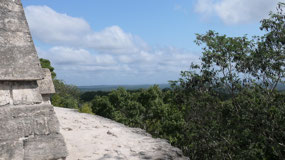
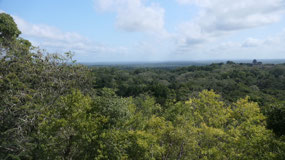
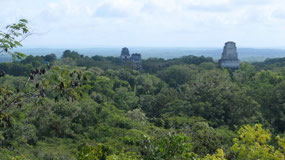
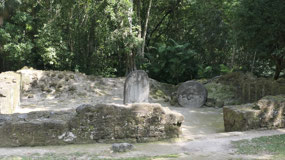
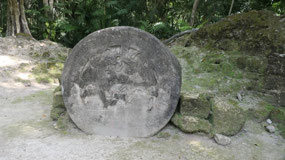

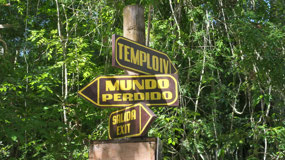
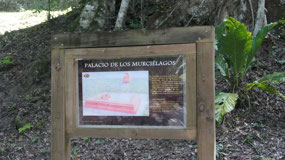
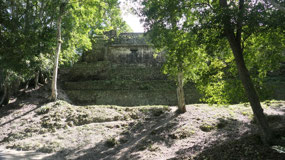
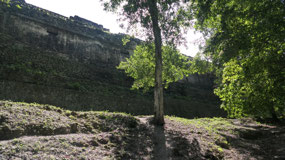
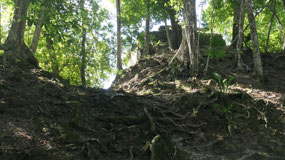
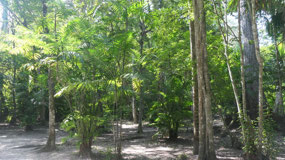
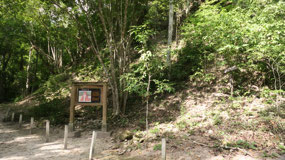
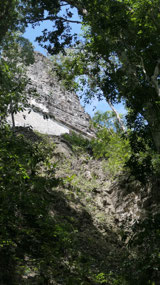
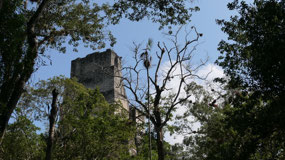
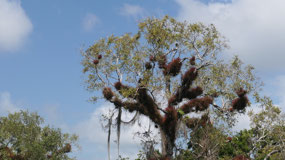
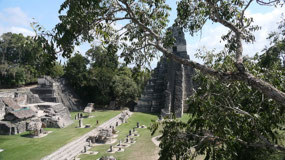
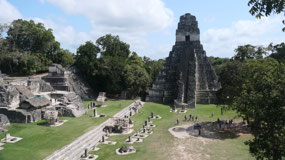
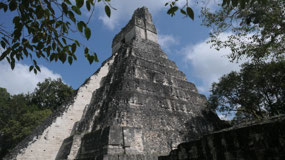
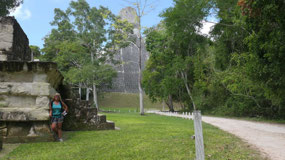
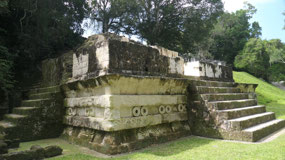
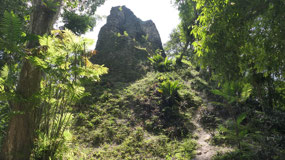

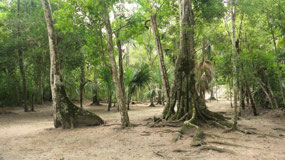
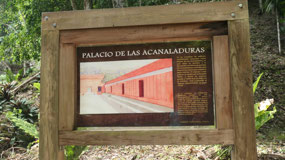
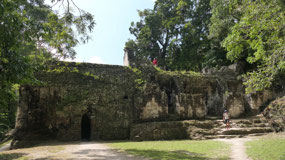
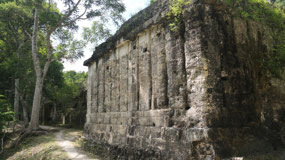
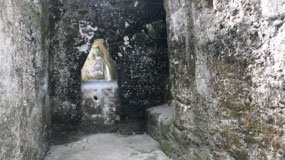

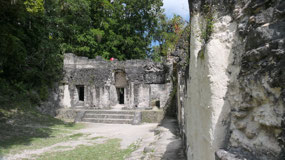
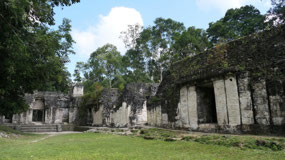
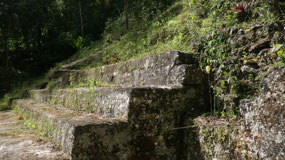


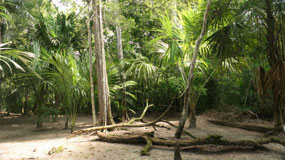

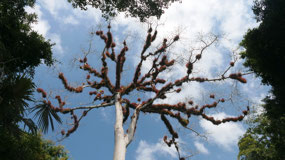
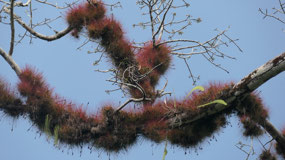

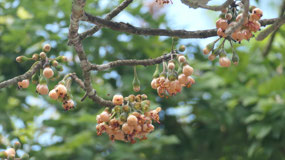
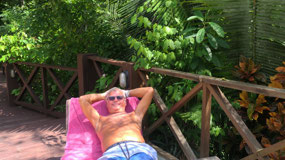
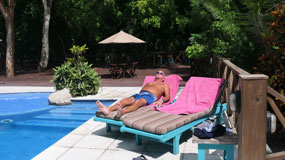

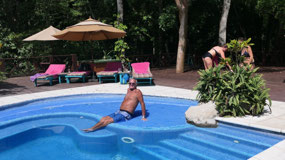
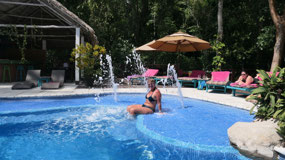
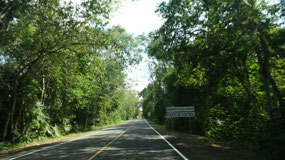
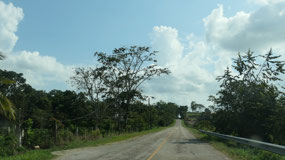
2025-05-22